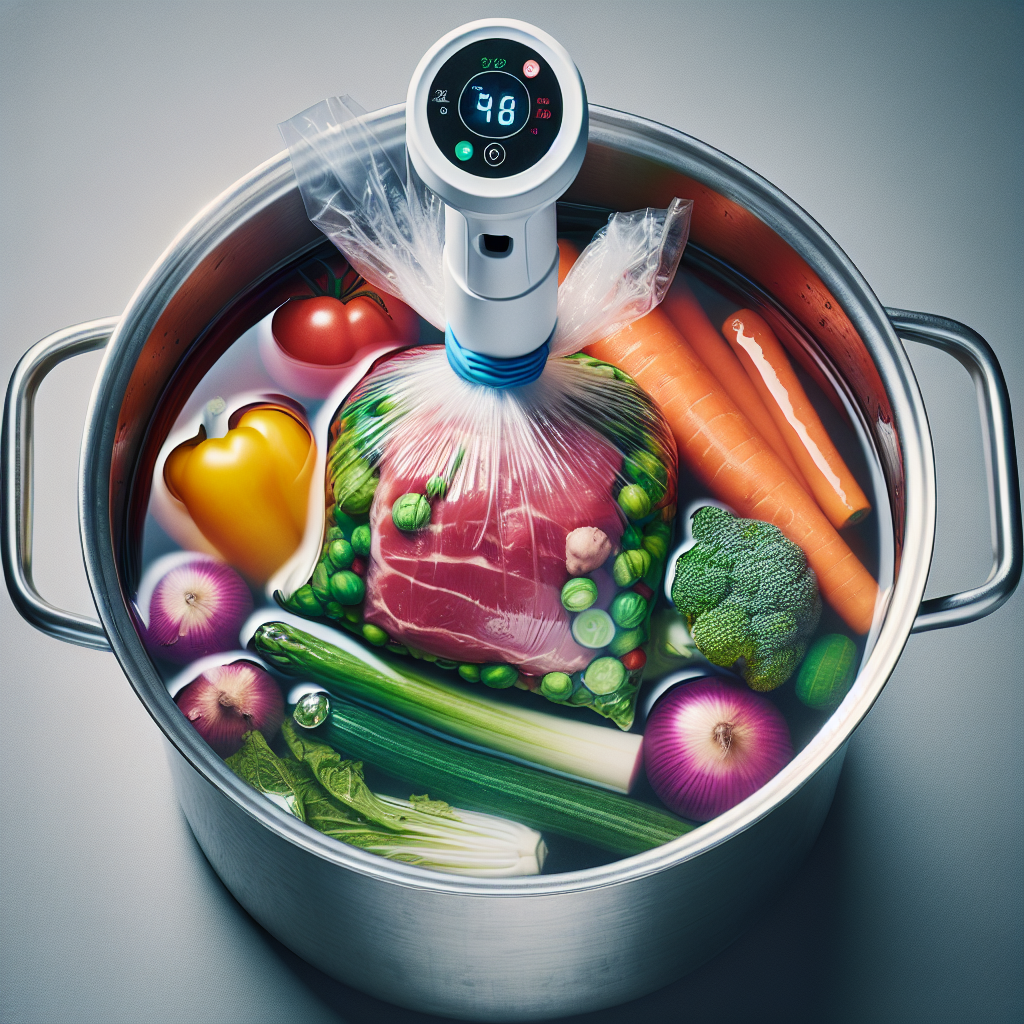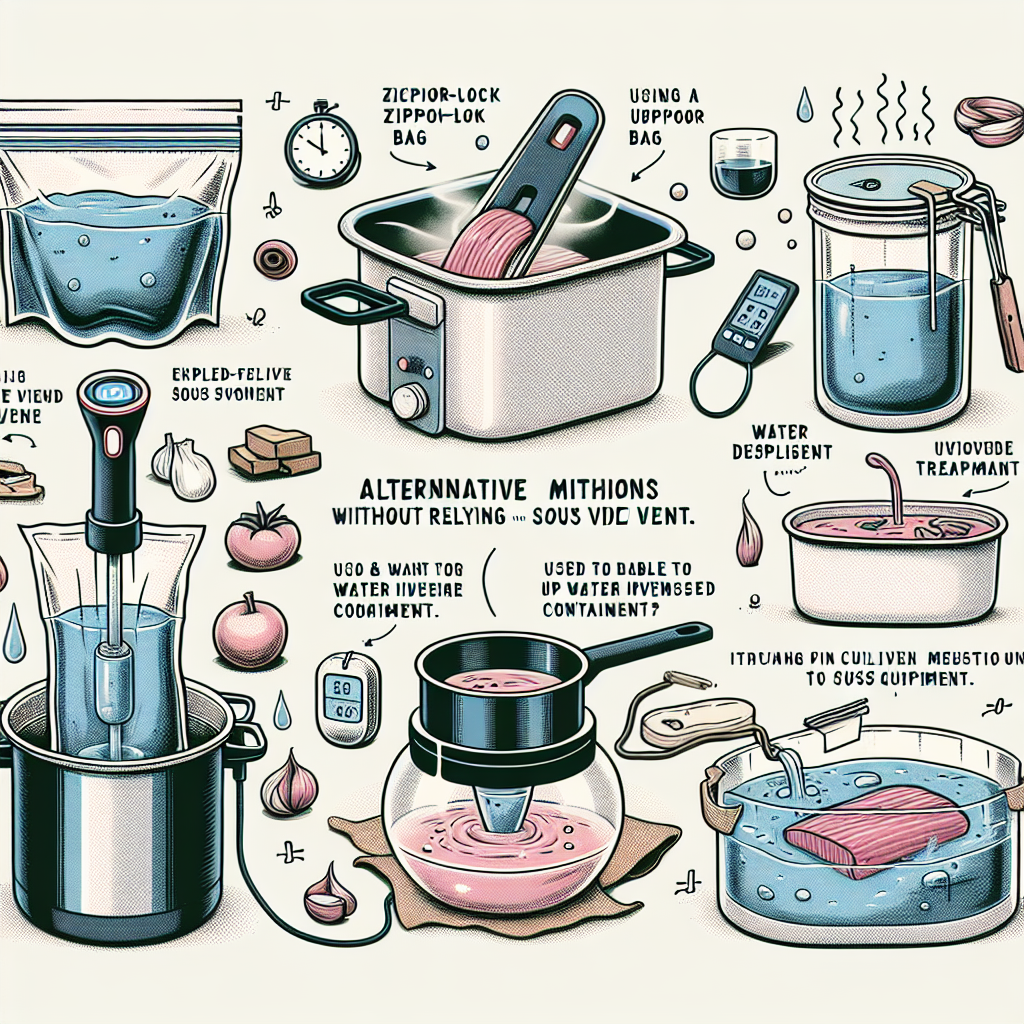
If you’ve ever wondered if it’s possible to whip up a sous vide feast without the fancy equipment, you’re in for a delightful surprise! Believe it or not, you can absolutely embark on your culinary adventure without a vacuum sealer or immersion circulator. With a bit of creativity and some kitchen essentials, you’ll soon be enjoying perfectly cooked, restaurant-quality meals in the comfort of your own home. So, let’s explore the fascinating world of sous vide cooking and discover the alternative methods that can help you achieve delicious results without breaking the bank. Get ready to elevate your cooking game and impress your taste buds like never before!
Using the Stovetop Method
Using a Large Pot and Thermometer
If you don’t have a vacuum sealer or immersion circulator, don’t worry! You can still enjoy the benefits of sous vide cooking using the stovetop method. One way to achieve this is by using a large pot and a thermometer.
To get started, fill the pot with water. Make sure to leave enough space for your ingredients and to allow for expansion. Clip a cooking thermometer to the side of the pot, ensuring that the probe is submerged in the water. This will help you monitor and maintain the desired temperature throughout the cooking process.
Once the water is ready, preheat your stove on low heat. You can adjust the heat as needed to achieve and maintain the desired temperature. Keep an eye on the thermometer and make any necessary adjustments to keep the water temperature stable.
While this method may require more attention and manual temperature adjustments compared to using a sous vide immersion circulator, it can still produce delicious results.
Using a Ziplock Bag and Water Displacement
Another alternative method to sous vide cooking without a vacuum sealer or immersion circulator is by using the ziplock bag and water displacement technique. This method is simple and allows you to achieve similar results to traditional sous vide cooking.
To begin, place your seasoned ingredients into a ziplock bag. Seal the bag, leaving a small opening. Slowly lower the bag into the pot of water, making sure the opening is above the water line. As you lower the bag, the water pressure will push the air out of the bag. Once most of the air is out, carefully seal the bag completely.
This technique creates a water-tight seal around the food, preventing any water from entering the bag. The water displacement also helps to ensure even cooking and flavor infusion.

Alternative Appliances for Sous Vide
Slow Cooker Method
If you’re looking for a more hands-off approach to sous vide cooking without a vacuum sealer or immersion circulator, the slow cooker method may be the perfect solution for you.
To use this method, fill your slow cooker with water and set it to the desired temperature. While slow cookers may not have the precise temperature control of immersion circulators, they can still maintain a consistent temperature over a longer period of time. It’s important to note that you might need to experiment with your slow cooker to find the ideal setting that achieves and maintains the temperature you desire.
Once the water reaches the desired temperature, carefully place your seasoned ingredients into a ziplock bag and remove as much air as possible before sealing it. Place the sealed bag into the water bath of the slow cooker and let it cook for the desired amount of time. Remember to periodically check the water temperature and adjust if necessary to ensure even cooking.
Oven Method
If you don’t have a vacuum sealer or immersion circulator, but you do have an oven, you can still experiment with sous vide cooking using the oven method.
To use this method, preheat your oven to the desired temperature. Place your seasoned ingredients into a ziplock bag, ensuring that it is sealed tightly with no air bubbles. Then, prepare a water bath by using a large roasting pan or casserole dish filled with enough water to submerge the bag completely.
Carefully place the bag into the water bath, ensuring that it’s fully submerged. Slide the pan into the preheated oven and let it cook for the desired amount of time. Remember to check the water temperature periodically and make any necessary adjustments.
While this method may require more attention compared to using a sous vide immersion circulator, it can still yield delicious and tender results.
Tips and Tricks for Successful Sous Vide without Vacuum Sealer or Immersion Circulator
Choosing the Right Cuts of Meat
When using alternative methods for sous vide cooking without a vacuum sealer or immersion circulator, it’s essential to choose the right cuts of meat. Opt for cuts that are tender and have a good amount of marbling, as they will be more forgiving during the cooking process. Tough cuts of meat may not benefit as much from sous vide cooking without the precise temperature control of an immersion circulator.
Seasoning and Flavoring Options
Don’t forget to season your ingredients before cooking them sous vide style. Unlike traditional methods of cooking, seasonings and flavors can’t penetrate the food as easily without the exposure to direct heat. Take advantage of marinades, rubs, and spices to infuse your dishes with delicious flavors. You can even experiment with vacuum-sealing your seasoned ingredients before using the stovetop or oven techniques for even more flavor infusion.
Monitoring and Maintaining Temperature
Since you don’t have the precision of an immersion circulator, it’s important to continuously monitor and maintain the water temperature during the cooking process. Use a reliable and accurate thermometer to keep an eye on the temperature and make adjustments as needed. This will ensure that your food is cooked evenly and to the desired doneness.
Safety Precautions
When cooking sous vide without a vacuum sealer or immersion circulator, it’s crucial to practice proper food safety measures. Make sure to thoroughly clean and sanitize all equipment before and after use. Be cautious when handling hot water and always use oven mitts or tongs to avoid burns. Additionally, ensure that your ingredients are properly stored and handled to prevent any risks of foodborne illness.
Conclusion
While a vacuum sealer and immersion circulator may be the ideal tools for sous vide cooking, they are not the only options. By using the stovetop method with a large pot and thermometer, or employing alternative appliances such as a slow cooker or oven, you can still achieve tasty and tender results without breaking the bank. Remember to choose the right cuts of meat, season and flavor your ingredients, monitor the temperature closely, and prioritize safety. With these tips and tricks, you can successfully sous vide without a vacuum sealer or immersion circulator and enjoy the benefits of this cooking technique. Happy cooking!




